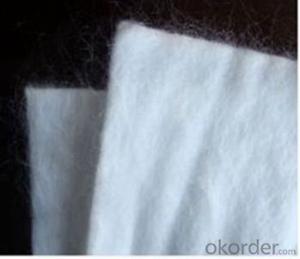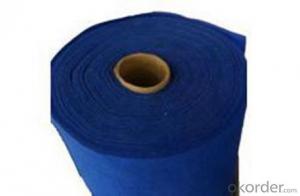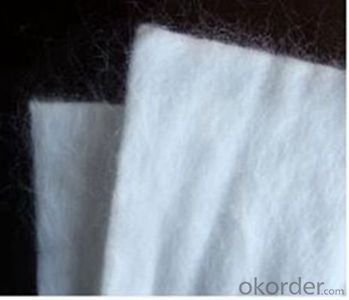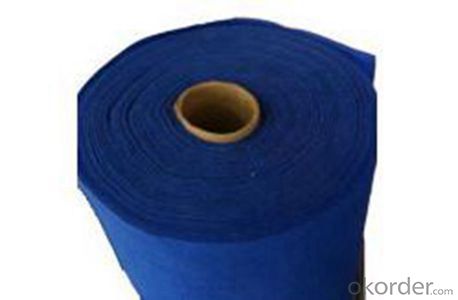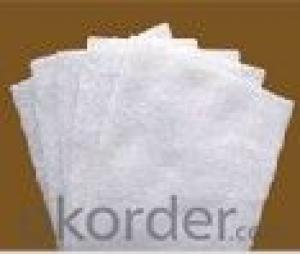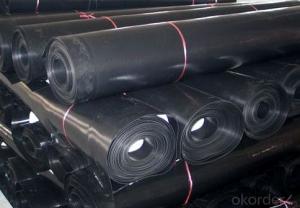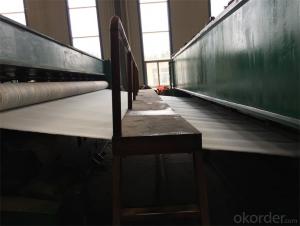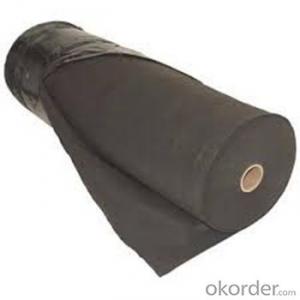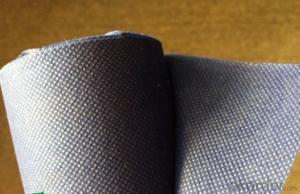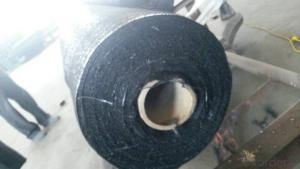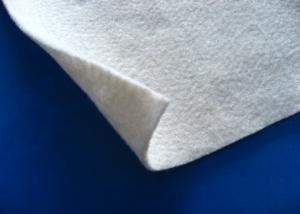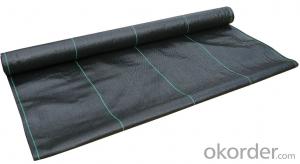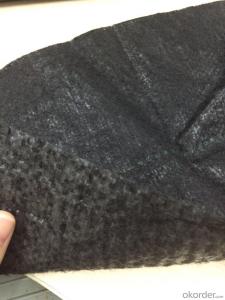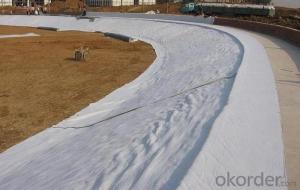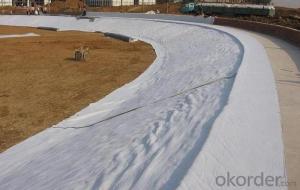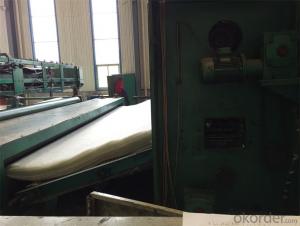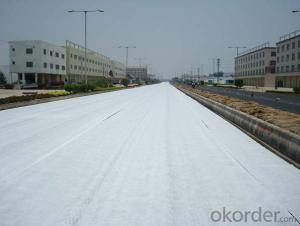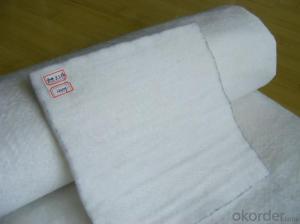Maceta Geotextil - Hightest Quality Woven Geotextile PP for Silt Fence from China
- Loading Port:
- China main port
- Payment Terms:
- TT OR LC
- Min Order Qty:
- 2000 m²
- Supply Capability:
- 1000000 m²/month
OKorder Service Pledge
OKorder Financial Service
You Might Also Like
Specification
Product Description:
Nonwoven Geotextile Fabric for Road Construction Geotextile
Desciriptions:
Polyester Nonwoven Geotextile Professioal Waterproof Geotextiles. A woven geotextiles is an economical solution for any civil engineering applications.Made from PP (polypropylene) or PET (polyester) short fiber by nonwoven needle punched manufacturing process, it has isolation, filtration, drainage, reinforcement, protection and maintenance etc. function. It separates, stabilizes, and reinforces soils and allows for filtration Woven geotextiles are manufactured by extruding polypropylene film and then slitting the film into individual yarns which are then woven to form the geotextiles.
Specifications and Technical datas:
| Weight / Mass | 100gsm - 800gsm |
| width | Within 8 m |
| longth | 50-100m/roll (at request) |
| Material | PP / PET |
| Color | Black , white , grey |
| Certification | CE/ISO9001 |
| Manufacturing method | nonwoven / woven |
Packaging & Shipping
Packing: PLASTIC FILM INSIDE, AND WOVEN BAG OUTSIDE
Shipping: About 15 days after receipt the deposit
pecifications
geotextile fabric
permeability,filtration,easy for construction
ISO and CE certificate
Good quality and competitive price
Our Service
Quality assurance
1.On a regular basis or as per your request,we entrust national testing agencies to conduct quality inspections
2. Strictly in accordance with the ISO9001-2008 international quality system standard,we monitor and manage the whole process throughout production,quality testing,and measurement to ensure product quality
3. For quality-related construction delay or substandard construction(except for damage or losses due to customer’s responsibility or irresistible natural disasters),we have refunding,replacement,and repair services.We will respond to customers’ feedbacks on quality issues within 24 hours.
After-sales service
1.In order to provide customers with comprehensive technical support,we will provide technical and other related information upon request in a timely manner.
2.In required,we will appoint specialized technicians to the construction site to give technical trainings to construction people,and offer technical guidance throughout the whole construction process.
3.For damage due to shipment and delivery,after we receive the complaint,we will check the issure through provided pictures and videos.If our responsibility is confirmed,we wil offer free replacement.
4.When the construction is completed,as your request,our technical staff may participate in the final acceptance.
FAQ:
Q: What kind of payments does jenor support?
A: T/T, L/C, Cash are accepted.
Q: Do you charge for the samples?
A: Accordeing to our company policy, the samples are free, we only charge the freight fee. And we will return the freight fee during the next order.
Q: Can you produce according to customers' design?
A: Sure, we are professional manufacturer, OEM and ODM are both welcome.
Q: Do you have other products?
A: Yes, please check the pictures:
- Q: How do geotextiles assist in slope stabilization?
- Geotextiles assist in slope stabilization by providing reinforcement and erosion control. They are placed on slopes to prevent soil erosion, hold the soil in place, and increase its stability. The geotextiles act as a barrier, allowing water to pass through while retaining the soil particles, which prevents soil loss and slope failure. Additionally, the geotextiles distribute the load evenly across the slope, reducing the pressure on the soil and increasing its resistance to movement.
- Q: How do geotextiles help in stabilizing embankments?
- Geotextiles provide essential reinforcement and stabilization to embankments by distributing loads, preventing soil erosion, and improving overall slope stability. They act as a physical barrier, effectively separating different soil layers and preventing them from mixing, which helps maintain the embankment's structural integrity. Additionally, geotextiles enhance drainage and filtration, allowing water to flow through while retaining soil particles, thus reducing pore water pressure and preventing saturation-induced failures. Overall, geotextiles play a vital role in enhancing the stability and longevity of embankments.
- Q: Can geotextiles be used for reinforcement of railway tracks?
- Yes, geotextiles can be used for reinforcement of railway tracks. Geotextiles are commonly used in railway engineering to improve track stability, reduce settlement, and increase load-bearing capacity. They are placed beneath the track ballast to distribute loads more evenly, prevent ballast contamination, and provide separation and filtration functions. Geotextiles can effectively enhance the performance and longevity of railway tracks.
- Q: 300 grams of geotextile how much money a square meter
- Geotextile, also known as geotextile, it is made of synthetic fiber through acupuncture or woven from the permeability of geosynthetics. Geotextile is a new material geosynthetics which one, the finished product for the cloth, the general width of 4-6 meters, the length of 50-100 meters. Geotextile is divided into a spinning geotextile and non-woven filament geotextile. Ordinary about 2.00 friends
- Q: How do geotextiles help with soil reinforcement in embankments?
- Geotextiles help with soil reinforcement in embankments by providing a stable and strong layer that prevents soil erosion, improves load distribution, and enhances the overall stability of the embankment.
- Q: What are the key factors affecting the interface friction of geotextiles?
- The key factors affecting the interface friction of geotextiles include the type of soil or material they come into contact with, the surface roughness of the geotextile and the adjacent material, the normal stress or pressure applied to the interface, and the moisture content of the soil or material.
- Q: How are geotextiles affected by temperature variations?
- Geotextiles are affected by temperature variations as they can expand or contract based on the temperature changes. This expansion or contraction can impact their effectiveness in various applications such as erosion control, filtration, or drainage. Additionally, extreme temperatures can weaken the fibers of geotextiles, reducing their overall durability and lifespan. Therefore, temperature variations need to be considered while selecting and designing geotextile systems to ensure their optimal performance and longevity.
- Q: Can geotextiles be used in coastal protection projects?
- Yes, geotextiles can be used in coastal protection projects. Geotextiles are commonly used as erosion control measures in coastal areas. They can help stabilize soil, prevent erosion, and enhance the overall resilience of coastal structures. Additionally, geotextiles can provide a protective barrier against wave action and filter out sediment, making them an effective solution for coastal protection projects.
- Q: Geotextile laying should be beyond the edge of how to set the number of specific requirements? Which specification is more detailed
- Geotextile laying should be beyond the edge of how to set the number of specific requirements? You want to understand this situation, there is no clear norms, but can refer to the "garbage sanitary landfill seepage control system engineering technical specifications" (CJJ133-2007) 5.6.6 of the provisions of not less than 300mm is possible The Article 5.6.6 of CJJ133-2007 states that: ... the repair range shall be greater than 300mm around the breakage range.
- Q: How do geotextiles improve the performance of landfills?
- Geotextiles improve the performance of landfills by acting as a barrier, preventing the mixing of different layers of waste materials. They help in controlling erosion, reducing the risk of soil contamination, and facilitating proper drainage. Additionally, geotextiles provide reinforcement to the landfill structure, increasing its stability and longevity.
Send your message to us
Maceta Geotextil - Hightest Quality Woven Geotextile PP for Silt Fence from China
- Loading Port:
- China main port
- Payment Terms:
- TT OR LC
- Min Order Qty:
- 2000 m²
- Supply Capability:
- 1000000 m²/month
OKorder Service Pledge
OKorder Financial Service
Similar products
Hot products
Hot Searches
Related keywords
